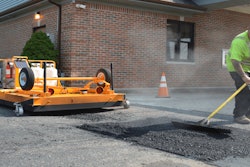In How Laws are Made in Minnesota, Part 2, we discussed an email dated November 26, 2008. In that email, Minnesota Pollution Control Agency (MPCA) staff scientist Judy Crane announced that MPCA should support a ban on refined coal tar-based pavement sealers (RTS) in Minnesota based on (1) a U.S. Geological Survey (USGS) study and (2) an unattributed report that the U.S. Environmental Protection Agency (EPA) was about to issue a “strong statement.” MPCA’s own consultant had pointed out that the USGS study was flawed; it had not identified a signature unique to RTS. By the end of 2008 other published efforts had tried - without succeeding – to use forensic methods to connect sediment PAHs to RTS. Faced with the reality that the consultant’s report did not support the scientific basis for the recommended ban, Dr. Crane and her MPCA colleagues immediately began working on proposals requesting funds to study the issue of polycyclic aromatic hydrocarbons (PAHs) in Minnesota stormwater detention ponds with the presumption that RTS is the primary source of PAHs.
Recommending a ban on RTS simultaneously with studying the issue might strike most people as a classic example of putting the cart before the horse, but MPCA staff scientists were confident in what they expected to find. In an email to a group of MPCA supervisors dated December 2, 2008, Dr. Crane writes:
"Bruce [Wilson] and I also agree that the Agency should consider a parallel-track effort to encourage a ban of coal-tar based sealers in Minnesota. Recent published work by the USGS provides adequate rationale for moving forward with a ban."
In the same email Dr. Crane provides a detailed outline of the proposed PAH study, and writes:
"I think we could forego hiring a consultant for some of this work as we have the expertise in-house to conduct some of these tasks."
So let’s recap. MPCA staff by the end of 2008 felt justified in recommending a product ban based on one local and limited study published by the USGS in 2005, the conclusions of which had been called into question by others including, in the summer of 2008 MPCA’s own consultant. At the same time MPCA recommended expenditure of additional tax payer’s money to study the issue, apparently confident that a study would confirm their preconceived conclusion. This time, however, rather than turn to another outside consultant (similar to the one who, as detailed in Part 2, had failed to see a connection between RTS and the PAHs in the USGS study), the MPCA recommended the research be kept “in-house.”
Oh. And the emails up to this point in time contain no trace of any attempt to engage with or consult anyone in the sealcoat industry or consider potential impacts of a ban on jobs or business.
Arguably, PAHs are the most studied substances in the environmental sciences. Thousands of papers have been published about PAHs. There is a scientific society devoted just to the study of PAHs, and a dedicated peer-reviewed journal. However, by focusing primarily on a single questionable study, without hearings or a cost-benefit analysis or evidence of attempts to contact stakeholders, MPCA convinced the Minnesota Legislature to undertake the first steps in forcing municipalities to implement bans. They did so by controlling their purse strings. Dr. Crane described legislative developments in the early months of 2009 as follows:
"In the 2009 Minnesota legislative session, a ban on the use of coal tar-based sealcoats by state agencies was implemented beginning July 1, 2010. In addition, the State of Minnesota will make grant funding available in state fiscal year 2011 for municipalities to implement best management practices (BMPs) to treat or clean-up contaminated sediments in their stormwater ponds. This funding will only be available to local governments that have adopted an ordinance restricting usage of coal tar-based sealcoat products, unless a statewide restriction has been implemented by then."
- Crane and others (2010). Contamination of Stormwater Pond Sediments by Polycyclic Aromatic Hydrocarbons (PAHs) in Minnesota: The Role of Coal Tar-based Sealcoat Products as a Source of PAHs
Next: PCTC cries “foul.”



















